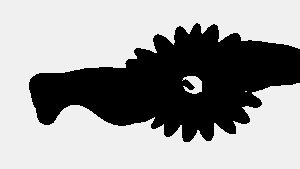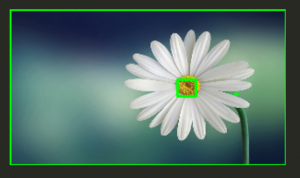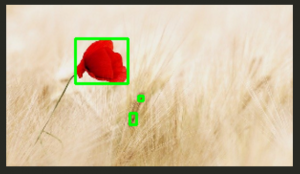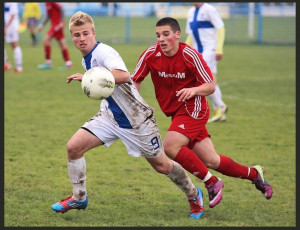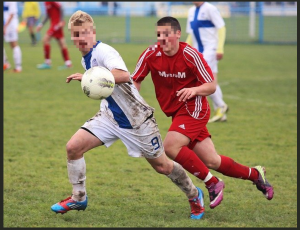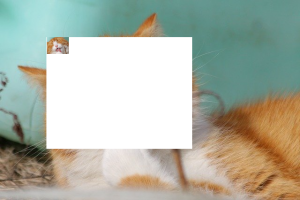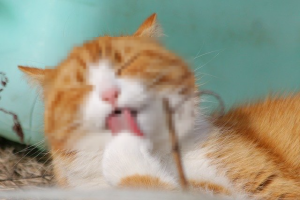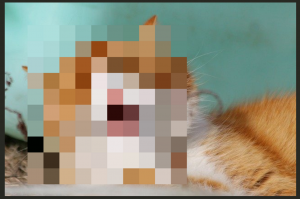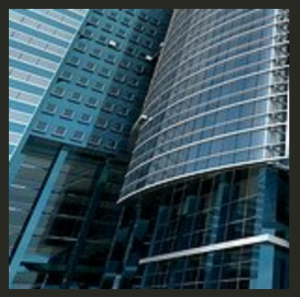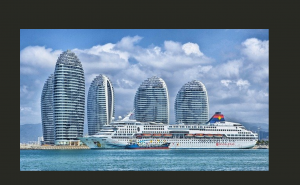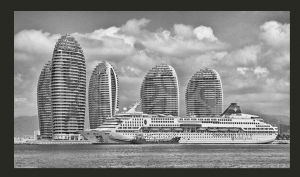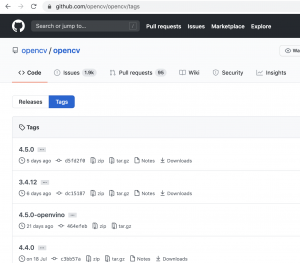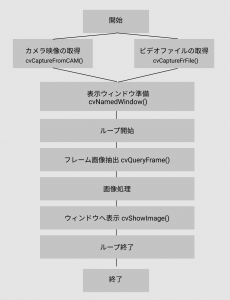まず、葉書の郵便番号部分を抽出する。
元画像
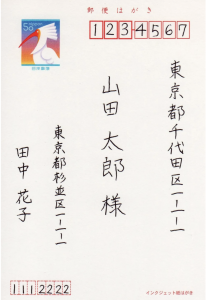
import cv2
import matplotlib.pyplot as plt
def detect_zipno(fname):
img = cv2.imread(fname)
h, w = img.shape[:2]
img = img[0:h//2, w//3:]
gray = cv2.cvtColor(img, cv2.COLOR_BGR2GRAY)
gray = cv2.GaussianBlur(gray, (3, 3), 0)
im2 = cv2.threshold(gray, 140, 255, cv2.THRESH_BINARY_INV)[1]
cnts = cv2.findContours(im2, cv2.RETR_LIST, cv2.CHAIN_APPROX_SIMPLE)[0]
result = []
for pt in cnts:
x, y, w, h = cv2.boundingRect(pt)
if not(50 < w < 70): continue
result.append([x, y, w, h])
result = sorted(result, key=lambda x: x[0])
result2 = []
lastx = -100
for x, y, w, h in result:
if(x - lastx) < 10: continue
result2.append([x, y, w, h])
lastx = x
for x, y, w, h in result2:
cv2.rectangle(img, (x, y), (x+w, y+h), (0, 255, 0), 3)
return result2, img
if __name__ == '__main__':
cnts, img = detect_zipno("postcard.png")
cv2.cvtColor(img, cv2.COLOR_BGR2RGB)
cv2.imwrite("result.png", img)
$ python3 app.py
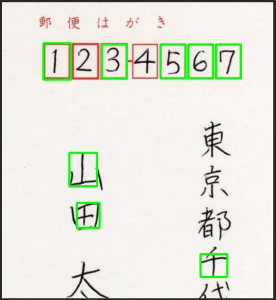
なんでやねん。なんで"2"と"4"が抽出されない。。。
前処理を少し変える。
img = img[0:h//5, w//3:] # h//3 -> h//5
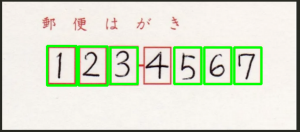
4が抽出されない。
なぜだ?? ぼかしの周囲のサイズを変えてみる。
gray = cv2.GaussianBlur(gray, (1, 1), 0)
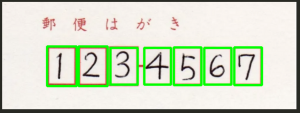
おおおおおおおおおおおおおおおおお
AI開発で、パラメータを調整するって、こういうこと????
うん、ちょっと興奮しました。
デバッグとはなんか感覚が違いますね。
あれ、というかこれ、記入する領域がわかってたらtesseractでOCRすりゃいいんだから、RPAできんじゃん。。
選挙システムとか注文書とか。。


